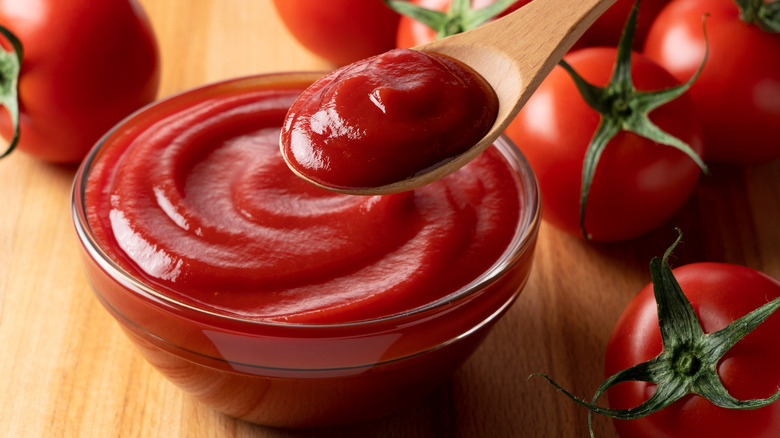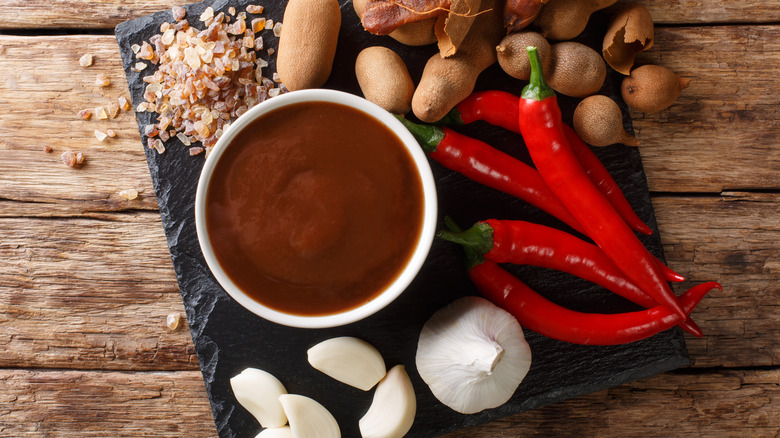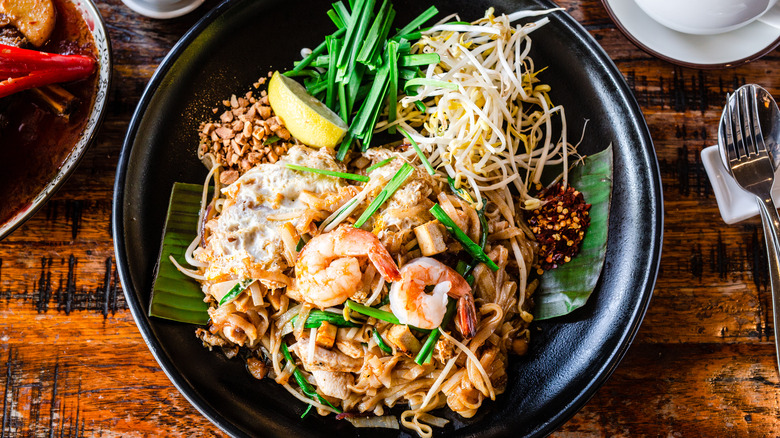The Unexpected, Tangy Ingredient Perfect For Homemade Pad Thai
We may receive a commission on purchases made from links.
Pad Thai has grown to become a popular favorite among most Americans. Chances are there's a Thai restaurant near you, and they all probably serve pad Thai, a stir-fried noodle dish typically featuring rice noodles, eggs, bean sprouts, and protein like shrimp and chicken. Most pad Thai dishes emulates a reddish-brown hue, thanks to its ingredients, like tamarind paste and chili peppers. Pad Thai has a number of ingredients that may be inaccessible for many. If you're trying to make pad Thai at home, you can replicate the dish's flavor profile as well as its glowing red color by using ketchup.
Although ketchup isn't necessarily a common ingredient in pad Thai, it can serve as a substitute for tamarind paste. Ketchup provides the same tangy, sweet, acidic profile that tamarind paste offers in the noodle dish. Combine ketchup with fish sauce and lime juice to add in homemade pad Thai.
Substitutes for other ingredients in pad Thai
What makes pad Thai stand out is its unique flavor profile. A typical pad Thai is a marriage of various sweet, salty, and sour components. In fact, Thai cuisine emphasizes a harmonious combination of sour, salty, sweet, and spicy flavors. Pad Thai is a mishmash of aromatic and complimentary sauces and seasoning; a typical pad Thai uses tamarind paste, fish sauce, palm sugar, and chili garlic sauce.
Many of these ingredients are available at Asian grocery stores, but if these items aren't readily accessible, you can use substitutes to mimic these flavors. Instead of tamarind paste, use a mixture of ketchup, fish sauce, and lemon juice. MasterClass recommends using Worcestershire sauce as well. If you don't like ketchup or Worcestershire sauce, combine rice vinegar and sugar to replicate tamarind paste instead. Substitute soy sauce and minced anchovy for fish sauce and Sriracha or red pepper flakes for chili garlic sauce.
Pad Thai is a relatively new dish
Even though ketchup seems disingenuous in Pad Thai, the origin of the dish is actually recent to its namesake country. According to the New York Times, pad Thai was created by the Thai government in order to promote a national collective identity. The dish was also a result of a rice shortage, during the early twentieth century, shortly after World War II. Rice noodles were cheap and readily available at the time.
Pad Thai and other Thai dishes made its way to the United States by way of "gastrodiplomacy" or culinary diplomacy, according to Vice. The U.S. and Thailand developed a relationship to help popularize Thai cuisine and culture and, thus, tourism to the country. In the early 2000s, the Thai government created a program that trained and encouraged chefs to open restaurants abroad, including in America, CNN reported.
Today, there are over 10,000 Thai restaurants in the U.S. If you ever feel bad about squeezing some ketchup onto your pad Thai, know there may be some restaurants that use ketchup in their kitchens, too, as some Redditors point out.


